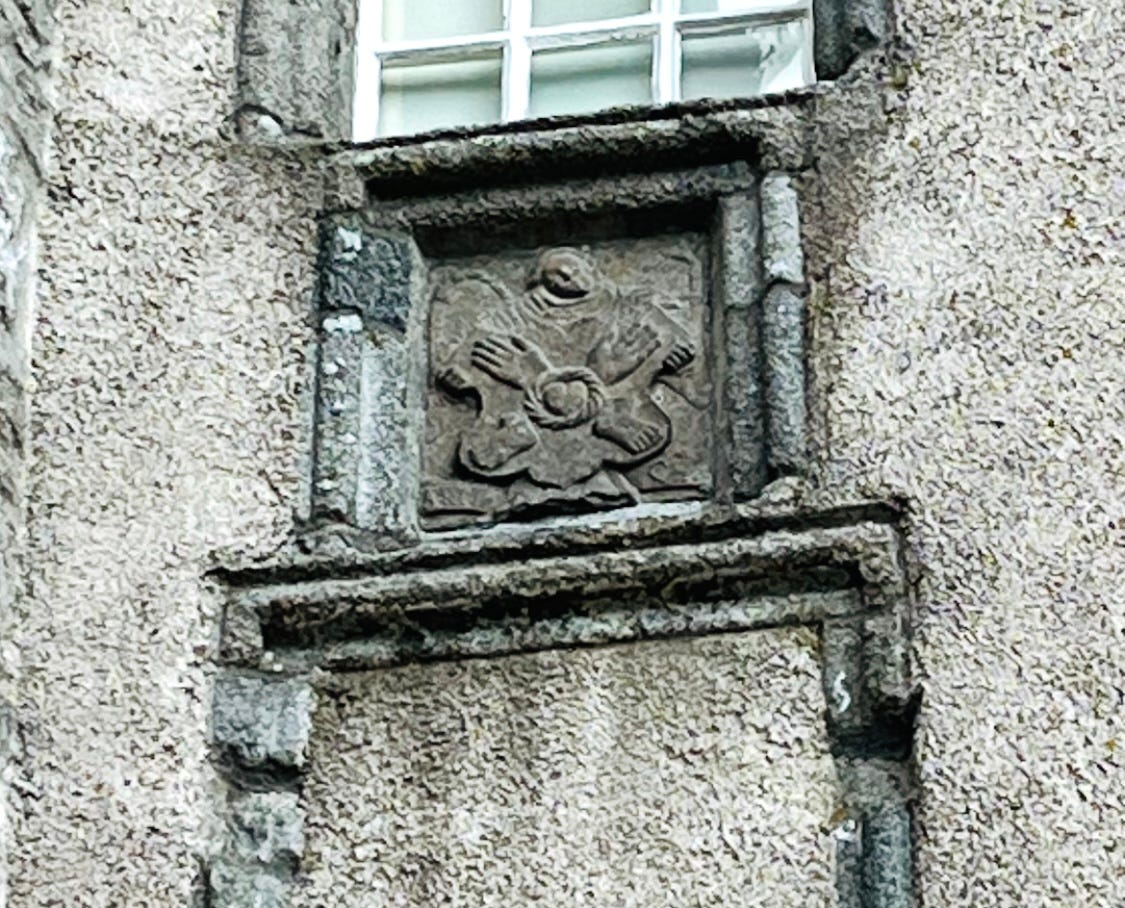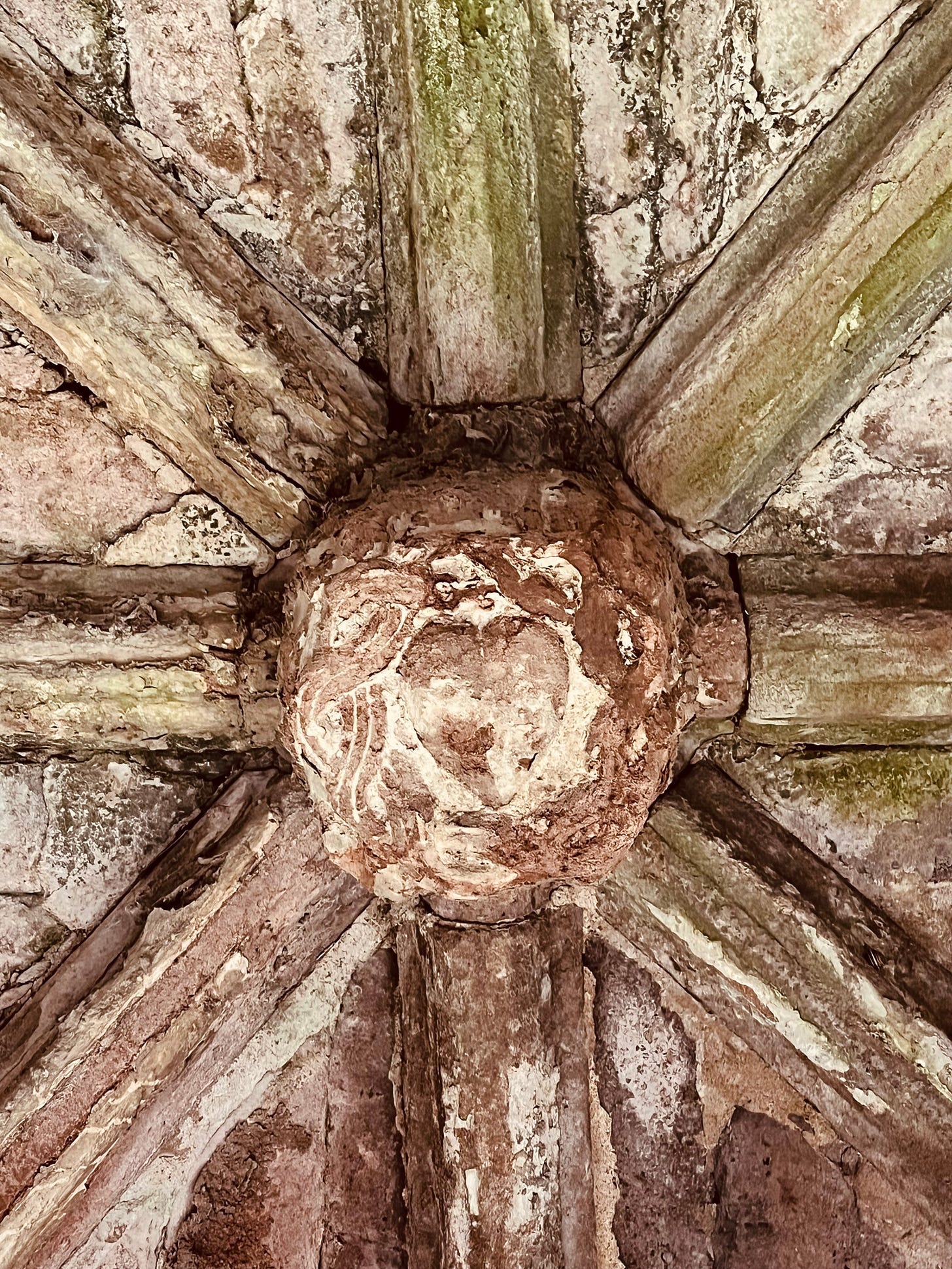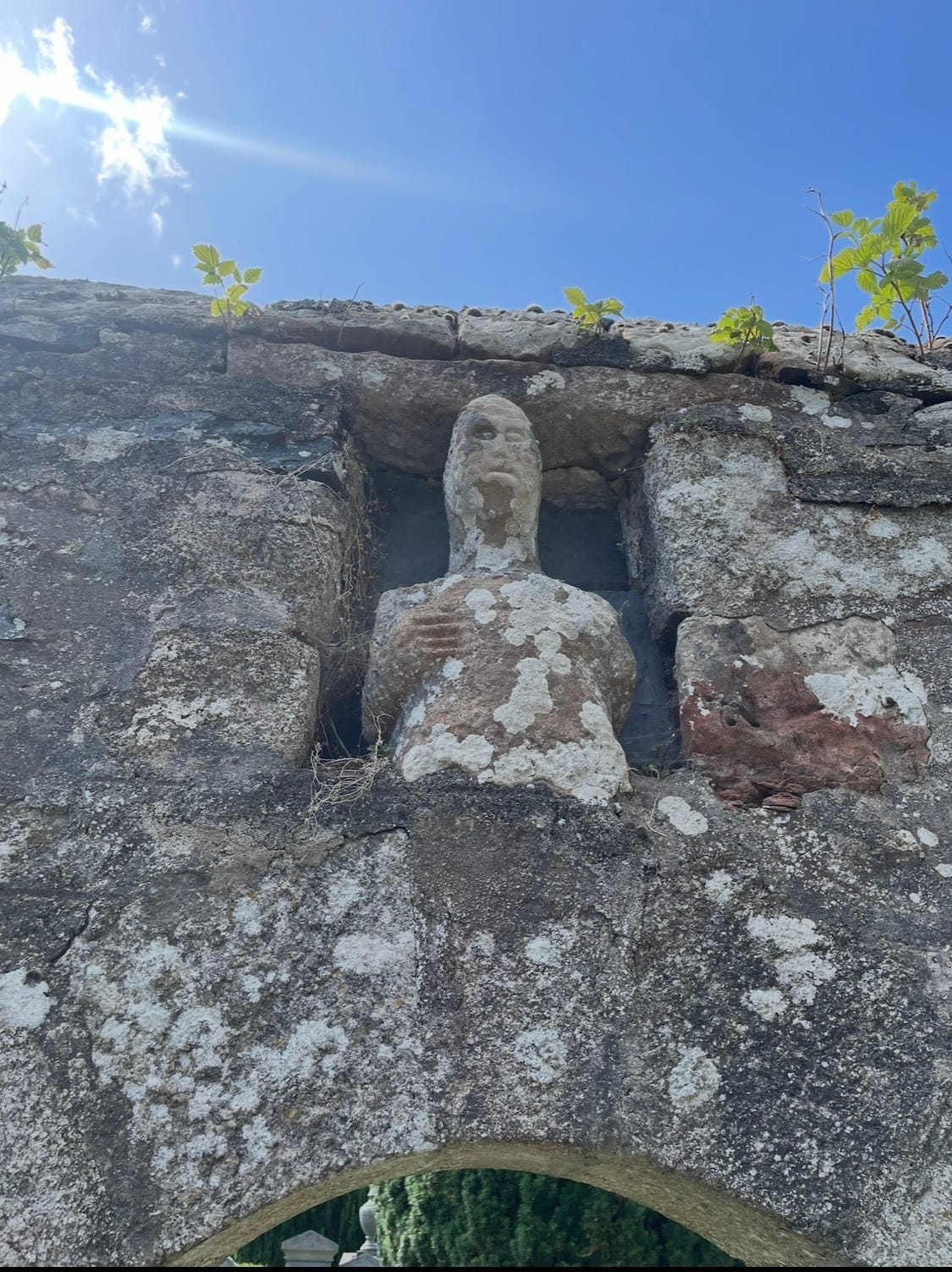Hidden Scottish Catholicism: Finding the Faith Set in Stone in Aberdeenshire
“One of the spiritual lungs of Scotland, and of Catholic Scotland.”
In the Coracle This Week: Kirsten Schouwenaars-Harms on the Catholic faith carved in Scottish stones.
The Association of King James VII & II: Your are invited to explore Servant of God King James VII & II on our new sister publication - The St Germain En-Laye Press. It is part of the nascent Association of King James VII and II. It is a newly formed lay association exploring the life and faith of the King. Click here to find out more.
Saints this week: We have the confusing case of two St Beans, the important NE Saint - Saint Talocran, and the curious St Eata - a Northumbrian Saint who had a veneration in the Cairngorms. Click here to find out more.
Finding the Faith Set in Stone in the Aberdeenshire
“One of the spiritual lungs of Scotland, and of Catholic Scotland.”
Bishop Hugh Gilbert OSB
Aberdeenshire, an area around Aberdeen city, stretches from the Banffshire coast in the north all the way around to St Cyrus National Nature Reserve in the east. Known for its plentiful castles, rugged coastline, sandy bays, fruitful farmland, and the beautiful mountains of the Cairngorms National Park. Moreover, this rural county is also known for its many stones. Standing stones, Pictish stones, and the unique Recumbent stone circles tell stories of people long gone. Signposted all over the county, these ancient monuments are hardly hidden. However, they are not the only stone monuments, symbols, and carvings that disclose the history of its inhabitants. Look beyond the obvious markers, and you’ll find some wonderful Catholic hidden history set in stone.
Sometimes it can feel like the county is slightly forgotten, so far from the beaten track. But when the penal laws came into effect in the 16th century, it suddenly became a virtue. The area became the hidden Catholic heartland of Scotland. Many of the clans and Lairds in the area remained faithful to their traditional beliefs. And therefore, Catholicism in the area was, as opposed to most of Scotland, never fully extinguished.
Some of these Catholic stone carvings and symbols remain to remind us of the penal era, but they are hardly signposted. Pre-Reformation churches had all been taken over or destroyed, and the faithful had to worship in houses, barns, and even wood kilns. The few new buildings that were erected were small, usually remote, and deliberately hidden away. A good way of letting the remaining faithful know that the traditional faith was upheld was through Catholic symbols, particularly those set in stone.
The Arma Christi
The Arma Christi is essentially the coat of arms of Christ. It depicts the 5 wounds of Christ on his hands, feet, and heart. We know of four of these symbols carved in stone in tower houses in Aberdeenshire. The ones that have been found are only about 20cm in diameter.
The most well-known is the one found at Castle Fraser, south of Inverurie in Aberdeenshire. The current castle was built in the 16th century after the penal laws came into effect, and thus could not have any obvious signs of the family’s adherence to the Catholic faith. But, when you stand in the courtyard looking up to the East-facing wall of the square tower, you’ll find this obvious, to those in the know, sign of Catholicism.
Fortunately for us, when iconoclasts destroyed all the idols during the Scottish Reformation, they neglected to notice the Arma Christi. Hidden in plain sight, they must have been unaware of the relevance of the stone carving, and therefore, they left the symbol alone.
Another such Arma Christ is to be found in the Wine Tower in Fraserburgh. The 8th Laird of Philorth, Alexander Fraser, was an important man in the post-Reformation age. He was not Catholic, but his wife was, and it is likely she remained faithful throughout her life.
An avid builder, he created the curiously named Wine Tower. Standing on a very stormy corner of the Scottish coastline, its sole entry is raised high above ground level and was originally only reached by ladder. As the lowest chamber is pierced only by a useless diagonal gun-port and the middle chamber by a window facing the sea, it becomes evident that the entire structure was designed to prevent the viewing of its interior.
The uppermost was likely a chapel that he built for his Catholic wife in a time when openly practicing her faith would have been dangerous. The room has a carved crucifix and an Arma Christi visible on the north wall. From the outside, the building just looks like an inconspicuous semi-ruin between the cliffs and a carpark that is hardly a tourist attraction, or an attraction for the iconoclasts, for that matter. Without the building and the symbols being recognised, it would not be a treat to the reformation, and it was therefore likely left to its own devices.
Written in Stone
Delgatie Castle near Turriff was built by George Hay, 7th Earl of Erroll in the late 16th century. The family owned several strongholds in the area. A ribbed and groined vault, as well as a beautifully painted ceiling with heraldry and scripture quotes can be found. While these engravings are in themselves obviously not Catholic, the stone fireplace is engraved with the words,
“IHS MY. HOYP. IS. IN. YE. LORD, 1570”
It is the IHS that betrays the castle to be a place that adhered to the Catholic faith during the penal era, since IHS was a typical Jesuit symbol at that time.
Built by the same school of master masons, Gigth Castle was probably a sight to behold in its prime. However, these days it is a hidden ruin. The overgrown tower house is found in a field high above the river Ythan.
The entrance opens into a single-bay rib-vaulted vestibule, much like that at Delgatie Castle. The central boss behind the doorway is carved with a heart surrounded by a crown of thorns. Because the crown of thorns is also associated with the instruments used in Passion of our Lord the carving is considered by some as an Arma Christi.
Sacred Heart of Jesus
Personally, I argue the carving represents an early example of the sacred Heart of Jesus. The symbol as we know it now wasn’t revealed to Margaret Mary Alacoque until the 17th century, but the devotion was initially developed in the 11th century and common in the 16th century with the Jesuit order, who were particularly active in the area when Gight Castle was build.
In fact, Aberdeenshire has another good example of the 16th century sacred Heart devotion to be found at Cairnie Kirk in Strathbogie near Huntly, Aberdeenshire. The ruined church became home to the Gordon of Pirlurg family burial enclosure in 1597. The family had a carving made in a niche of their burial enclosure. It was never found by the iconoclasters, or if it was found it was certainly not seen for what it was. In fact, when it was initially rediscovered fully overgrown in the 19th century, it was believed to be a depiction of a man tearing open his chest. It took another century for it to be identified as an early representation of the Sacred Heart of Jesus.
Keep your eyes peeled
The symbolic stone carvings I have described here were, without doubt, made to proclaim their love for the Catholic faith. But they were certainly not carved as public declarations of this fact. They were meant to be hidden in plain sight, only to be understood by those alert and informed enough to recognise them for what they were. If you look closely, these symbols are there to be found, but since it took a long time for some of them to be rediscovered and sometimes even longer to be acknowledged for what they were, there is hope. If we keep our eyes peeled, others might be found in the future.
Ultimately, it shows that what is set in, or in this case, carved, stone is only provocative to those who understand their meaning. Obviously, the iconoclasts didn’t comprehend all of them and left several for us to rediscover.
By Kirsten Schouwenaars-Harms




Fascinating! I've come across some interesting representations of the Five Wounds in stone and stained glass recently. In England they are very rare because the 5 Wounds was an emblem of the Pilgrimage of Grace, the Catholic rebellion in northern England andxso it became a seditious image. Scottish Reformation history is quite different to England. Is there any evidence these were covered up and only revealed again in the course of time? I agree with you on the sacred heart one - these are great finds!